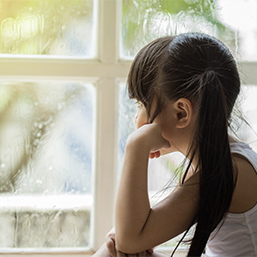
Seasonal Affective Disorder (SAD) is a type of depression related to a change in the seasons. Symptoms start in the fall and continue into the winter months, sapping your energy and making you feel moody.
\n \nSome people may get a mild version of SAD known as the “winter blues.” For many people, it is normal to feel a little down during the darker, colder months, but full SAD is more than that. It is a form of depression that affects millions, and those of us who live in areas where the days become significantly shorter are particularly vulnerable (There is summer SAD, but it is far less common).
\nPeople who have bipolar disorder are at increased risk of SAD. For some, episodes of mania may be linked to a specific season. Spring and summer can bring on mania or hypomania (a less intense form of mania). These are characterized by anxiety, agitation, and irritability.
\nCauses of SAD
\nScientists do not know exactly what causes seasonal depression, but lack of sunlight might trigger it in those prone to SAD.
\nSome theories about what causes SAD include:
\nBrain chemical imbalance. Serotonin is a neurotransmitter that contributes to feelings of happiness. Sunlight helps regulate serotonin, so the lack of sunlight can trigger SAD or make it worse for those who may already have less serotonin activity.
\nBiological clock changes. For some, less exposure to sunlight causes a shift in the internal biological clock, which regulates mood, sleep, and hormones. For some, this means less ability to regulate moods.
\nTurning back the clock. It can be a shock to the system when there is an abrupt change in winter that makes it suddenly very dark in the morning.
\nNegative thoughts. Those with SAD often experience anxiety, stress, and negative thoughts about winter.
\nVitamin D deficiency. Sunlight helps to produce vitamin D, so less sun in the winter can result in a vitamin D deficiency, which can affect serotonin and mood.
\nSymptoms of SAD
\nSAD is not a separate disorder; rather, it is a type of depression.
\nSigns of SAD include:
\nSome find light therapy in the morning to be helpful (do not use light therapy at night). This can come from a SAD lamp placed two to three feet away while you work, read, eat, or do other activities. Exposure to natural sunlight for as little as one hour per day can be therapeutic. Walking in the sunshine, or at least being near a sunny window, may have the same effect. Full spectrum light bulbs at home make your artificial light mimic daylight.
\nSome have suggested turning on all the lights when you wake up in the morning. Biologically, we are designed to sleep when it is dark and to awaken when there is light. Hence, it is harder to get out of bed when it still feels like night during the winter than when it is summer, and the sun is shining brightly when we wake up.
\nIf none of these strategies help, antidepressant medication can be very helpful. If the depression is severe, it needs to be treated.
\nManaging symptoms of SAD
\nYou can work to manage the symptoms of SAD. Get lots of light, get enough sleep, and eat a well-balanced diet. Plan activities and have social contact. A busy schedule keeps you from going deeper into depression. Do not isolate yourself, as being alone can make symptoms worse. If you cannot get out, reach out to friends and loved ones. Consider working with a psychologist to help with your symptoms.
\nAvoid using alcohol or drugs. Alcohol is a depressant. Alcohol and drugs may make symptoms worse and can interact negatively with antidepressant medications.
\n\n
Gwen Randall-Young is an author and award-winning psychologist. To obtain books, CDs, or MP3s, visit gwen.ca. Follow Gwen on Facebook for inspiration @GwenRandallYoung.
\n\n
See our related articles:
\nCalgary’s Child Magazine © 2025 Calgary’s Child